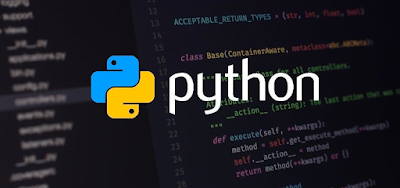Best 8 Programming Languages for Artificial Intelligence
Artificial Intelligence (AI) has revolutionized the way we interact with technology and has become an integral part of various industries, from healthcare to finance and beyond. Behind the impressive AI applications and systems, there are powerful programming languages driving the algorithms and models. In this article, we'll explore the best programming languages for AI, each offering unique advantages depending on your project's requirements.
1. Python
Python is the undisputed king when it comes to AI and machine learning. Its simplicity, readability, and extensive libraries make it the go-to choice for AI developers. Libraries like NumPy, TensorFlow, PyTorch, and scikit-learn provide robust support for data manipulation, neural networks, and machine learning models. Python's community is vibrant, and countless AI resources, tutorials, and frameworks are available, making it an ideal choice for beginners and experts alike.
2. R
R is another popular language in the field of AI, particularly for statistical analysis and data visualization. It excels in data preprocessing, statistical modeling, and data exploration. R's strength lies in its comprehensive ecosystem of packages like caret, randomForest, and xgboost, making it a preferred choice for data scientists and statisticians working on AI projects.
3. Java
Java, known for its robustness and scalability, is an excellent choice for developing AI applications that require high performance and stability. While it may not be as popular as Python in the AI community, Java offers powerful libraries and frameworks such as Deeplearning4j and Weka. Java's ability to handle large-scale AI projects and integrate seamlessly with other technologies makes it a strong candidate for AI development.
4. C++
C++ is favored in AI applications where performance is crucial. It is commonly used in game development and robotics, where real-time processing and low-level hardware interactions are necessary. Libraries like OpenCV and Dlib leverage the speed and efficiency of C++ for computer vision and image processing tasks. While C++ can be more challenging to learn than Python or R, it offers unparalleled performance optimization.
5. Julia
Julia is a relatively new programming language that combines the best of both worlds: high performance and ease of use. It's gaining popularity in AI research and development due to its speed in executing numerical and scientific computations. Julia's libraries, such as Flux.jl for deep learning, cater to AI enthusiasts and researchers who seek a performant alternative to Python.
6. Lisp
Lisp may seem like a blast from the past, but it has a special place in AI history. It's known for its symbolic computing capabilities and was the language of choice for early AI research. While it's less commonly used today, Lisp remains relevant in certain AI applications, especially for those involving natural language processing and symbolic reasoning.
7. Prolog
Prolog is a logical programming language often used in AI for knowledge representation and reasoning. It excels in rule-based systems and is widely employed in expert systems, natural language processing, and constraint logic programming. While it may not be a primary choice for general-purpose AI development, Prolog's unique features make it invaluable in specific domains.
8. Scala
Scala is a versatile language that runs on the Java Virtual Machine (JVM) and seamlessly integrates with Java libraries. Its conciseness and functional programming features make it an attractive choice for AI development. Libraries like Breeze and Spark MLlib offer AI developers tools for data manipulation, machine learning, and distributed computing.
Let's exemplify the use of different programming languages for specific AI tasks:
1. Image Classification
1.1. Python: Suppose you're developing an image classification system to identify objects in photos. You might use Python with libraries like TensorFlow or PyTorch. These libraries provide pre-trained models and tools for training your own deep neural networks. Python's simplicity and extensive libraries make it an excellent choice for this task.
1.2. C++: If you need real-time image classification, such as in autonomous vehicles, C++ could be preferred. Its speed and efficiency are crucial in processing large volumes of image data quickly. You might use OpenCV, a C++ library, to handle computer vision tasks efficiently.
2. Data Analysis and Visualization
2.1. R: Let's say you're a data scientist analyzing customer data for a retail company. R's powerful data manipulation capabilities and extensive visualization libraries make it a strong choice. You could use R's ggplot2 for creating informative visualizations and packages like dplyr for data preprocessing.
3. Natural Language Processing (NLP)
3.1. Python: For an NLP project, like sentiment analysis on social media data, Python is often the language of choice. Libraries like NLTK, spaCy, and Transformers offer a wide range of tools for text processing and training language models.
3.2. Lisp: In the realm of symbolic reasoning and expert systems, Lisp could be used. Imagine developing an AI system for medical diagnosis. Lisp's symbolic computing abilities can help represent medical knowledge and rules effectively.
4. High-Performance Computing
4.1. Java: If you're working on a large-scale AI project that involves processing massive datasets, Java's robustness and scalability might be needed. For example, in finance, where speed and reliability are crucial, Java can handle complex algorithmic trading systems.
4.2. Scala: Scala, with its compatibility with Java libraries, can also be used in finance for AI-driven trading strategies. Its concise syntax and functional programming features make it easier to work with complex financial data.
5. Machine Learning in Production
5.1. Julia: Let's say you're developing a recommendation engine for an e-commerce platform. Julia's high-performance capabilities can speed up recommendation computations significantly. You can use the Flux.jl library for training deep learning models efficiently.
6. Rule-Based Systems
6.1. Prolog: In a scenario where you're creating an expert system for diagnosing hardware issues, Prolog's logic-based approach can shine. You can encode rules and facts about hardware components and their potential problems in Prolog and let the system reason about possible issues.
These examples illustrate how different programming languages are suited for specific AI tasks based on their strengths and capabilities. Your choice of language should align with the requirements of your AI project to ensure optimal performance and efficiency.
Conclusion
The choice of programming language for your AI project depends on various factors, including your project's requirements, your team's expertise, and the problem domain you're tackling. Python remains the most accessible and widely adopted language for AI development, but other languages like R, Java, C++, Julia, Lisp, Prolog, and Scala have their unique strengths and are suited for specific use cases.
Ultimately, the best programming language for AI is the one that aligns with your project's objectives and allows you to leverage the full potential of artificial intelligence to solve complex problems, drive innovation, and make a positive impact on society.









.png)















